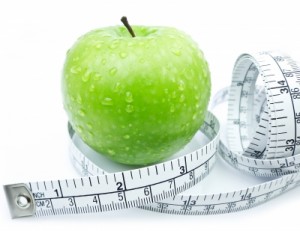In my last post I explained how you can estimate your daily calorie expenditure. So now you know how many calories you need to maintain your target weight we can take a look at how many calories you are actually consuming.
This requires some effort, but it really is worth it
This step will take some real work. You are going to have to start a food diary, weigh or estimate portion size and look up how many calories are in everything you eat. However it really is worth it, you will become much more aware of what you are eating.
My surprising discovery
I did this when I decided I didn’t want to hit 200lbs and needed to loose some weight. And what I discovered was stunning – at least it was to me at the time.
I had become quite comfortable with my routine of three trips to Starbucks everyday and I usually had something from the pastry case with my latte. I thought I was being sensible with a non-fat latte and occasionally opting for the healthy sounding apple bran muffin .
The lattes were only 100 calories each, so not a big deal, however each of the pastry case items was around 400 calories even the apple bran muffin was 350 calories. I was looking to get my weight back down to 175lbs which would be about 2500 calories a day. My trips to Starbucks accounted for about half of my calorie budget!
Start a food diary
The first step is to start a food diary – find a convenient place to record what you eat. I spend most of my life on a computer so I used Microsoft OneNote, but a notepad and pencil will do fine. Record what you eat and how much you eat for about a week. Don’t worry if it’s not quite perfect, you are just trying to get a rough idea here.
You may need to record the portion size as well. For instance if you sat in front of the TV with a bowl full of salted nuts you will need to know the approximate weight of the nuts. If however you ate a meal at big chain restaurants or out of a box or packet – then you will often be able to look up the calories for the whole meal. I invested $20 dollars in a digital kitchen scale.
Looking up the calories
Finding the calories for packaged foods is pretty easy – just look on the back of the packet. Pay close attention to serving size or number of servings – as the manufacturers idea of a serving may be different to yours.
If you have eaten a meal at a big chain restaurant you are in luck as they usually provide nutritional information online or in the restaurant. I got all my Starbucks nutritional information from their website: http://www.starbucks.com/menu/nutrition.
The health care reform bill that President Barack Obama signed into law a year ago includes a provision requiring large chain restaurants to clearly post calorie counts.
There are also lots of great websites out there for looking up nutritional information. The definitive source is http://www.nal.usda.gov/fnic and there are lots of sites like http://www.nutritiondata.com which present this data in a nicer format.
And if all else fails you can just do a search on Google or Bing.
Taking stock
Do this for about a week and you will develop a good sense for the calories contained in the food you are eating – which is a very helpful skill. You will also know how big the gap is between your calorie consumption and your calorie expenditure. If you are anything like me, this will be a disturbingly large number. In future posts I will talk about how to address that gap.
[ad name=”Google Banner 468×60″]




